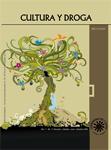Autores/as
Resumen
Resumen: Este escrito examina la relación única entre los chamanes y las plantas psicodélicas especiales valoradas en sus culturas. El uso del Peyote (Lophophora williamsii) entre la cultura indígena Huichol de México, y la coca (Erythroxyum coca var. coca) en las culturas indígenas de San Pedro de Atacama en el norte de Chile y los Aymaras de la región de La Paz en Bolivia son el centro de esta discusión. Este texto trata los papeles centrales que los chamanes y estas plantas juegan en las creencias y prácticas tradicionales, al igual que los aspectos terapéuticos de estas plantas y las maneras en que han llegado a simbolizar la identidad indígena en el tiempo de la globalización.
Citas
Alvarez, Alejandro. (1996). Diccionario Ckunza - Español/Español- Ckunza. Calama, Chile: Ediciones Odisea.
Boyd, C.E. and J.P. Dering. (1996). Medicinal and Halluginogenic Plants Identified in the Sediments and Pictographs of the Lower Pecos, Texas Archaic. Antiquity 7(268): 256-275.
Brysk, Allison. (2000). From Tribal Village to Global Village: Indian Rights and International Relations in Latin America. Stanford, CA: Stanford University Press.
Cartmell, Larry. (1991). Frequency and Antiquity of Prehistoric Coca-Leaf Chewing Practices in Northern Chile: Radioimmunoassay of a Cocaine Metabolite in Human– Mummy Hair. Latin American Antiquity, V. 2, No. 3, pp. 260-268.
Furst, Peter T. (1989). Review of Peyote Religion: A History, by Omer Stewart. American Ethnologist 16(2): 386-387.
Gómez, Domingo and Eva Suárez. (2004). Alimentación Tradicional Atacameña. Santiago: Impreso en Lom Ediciones LTD.
Hooper, J. and D. Teresi. (1986). The 3-Pound Universe. New York: G.P. Putnam’s Sons.
Inriati, Etty and Jane Buikstra. (2001). Coca Chewing in Prehistorical Coastal Peru: Dental Evidence. American Journal of Physical Anthropology, V. 114, No. 3, pp. 242-257.
Kolata, Alan. (1986). The Agricultural Foundations of the Tiwanaku State: A View from the Heartland. American Antiquity 51 (4): 748-762.
Langsjoen, Odin. (1996). Dental Effects of Diet and Coca-leaf Chewing in Two Prehistoric Cultures of Northern Chile. American Journal of Physical Anthropology, V. 101, No. 4, pp. 475-489.
Lewellen, Ted C. (2002). The Anthropology of Globalization: Cultural Anthropology Enters the 21st Century. Westport Connecticut: Bergin & Garvey.
Llagostera, Agustín. (2004). Los Antiguos Habitantes del Salar de Atacama: Prehistorica Atacameña. Chile: Universidad Católica del Norte.
MacLean, P.D. (1990). The Triune Brain in Evolution: Role in Paloecerebral Functions. New York: Plenum.
Morales, Edmundo. (1989). Cocaine: White Gold Rush in Peru. Tuscon: University of Arizona Press.
Rajsbaum, Ari. (1996). El Uso Tradicional de Plantas y Animales Frente La Ley. Ce-Acatl, Revista de la Cultura de Anáhuac 82: 38-87.
Schaefer, Stacy B. (1996). People of the Peyote: Huichol Indian History, Religion and Survival, co-editor with Peter T. Furst. Albuquerque: University of New Mexico Press. (revised paperback released 1997).
____________(1996a). Introduction. In People of the Peyote: Huichol Indian History, Religion and Survival. edited by Stacy B. Schaefer and Peter T. Furst, pp. 1-25. Albuquerque: University of New Mexico Press. (Revised paperback released 1997).
_____________(1996b).The Crossing of the Souls: Peyote, Perception and Meaning. In People of the Peyote: Huichol Indian History, Religion and Survival. edited by Stacy B. Schaefer and Peter T. Furst, pp. 138-168. Albuquerque: University of New Mexico Press. (revised paperback released 1997).
____________(1996c). Peyote, Pilgrims and ‘Don Juan Seekers’: Huichol Indians In A Multicultural World. In People of the Peyote: Huichol Indian History, Religion and Survival, edited by Stacy B. Schaefer and Peter T. Furst, pp. 503-521. Albuquerque: University of New Mexico Press. (revised paperback released 1997).
____________(1996d). Pregnancy and Peyote Among the Huichol Indians of Mexico: A Preliminary Report. Berlin, Germany: Yearbook For Ethnomedicine and the Study of Consciousness/Jarbuch für Ethnmomedizin und BewuBtseinsforschung No. 5, pp. 67-78.
(1996e). Cuando se cruzan las almas: la importancia del peyote en la culture Huichola. México D.F.: Ce-Acatl, Revista de la Cultura Anahuac No. 82, Julio-Agosto, pp. 32-37.
_____________(1998). Freedom of Expression: Huichol Indians – Their Peyote- Inspired Art and Mexican Drug Laws. Berlin, Germany: Yearbook For Ethnomedicine and the Study of Consciousness/Jarbuch für Ethnmomedizin und BewuBtseinsforschung 1997/1998 (was published 8/2000).
____________(2002). To Think With A Good Heart: Wixárika Women Weavers and Shamans. University of Utah Press.
(2003). El telar como objecto de poder sagrado en la cultura huichola. In Flechadores de Estrellas, edited by Jesús Jáuregui and Johannes Neurath. Mexico D.F.: Instituto Nacional de Antropología e Historia/Universidad de Guadalajara.
__________(2004a). In Search of the Divine: Wixárika (Huichol) Peyote Traditions in Mexico. In Drug Use and Cultural Contexts ‘Beyond the West’,edited by Ross Coomber And Nigel South. U.K.: Free Association Books.
_________(2004b). The Wixárika (Huichol) Altar: Place of the Souls, Stairway of the Sun. In Mesas and Cosmologies in Mesoamerica. San Diego Museum of Man Papers No. 42.
(2005a). Plants and Healing on the Wixárika (Huichol) Peyote Pilgrimage. In Pilgrimage and Healing, edited by Jill Dubuish and Michale Winkelman. Tuscon: University of Arizona Press.
__________(2005b). Huichol (Wixárika) Shamanism. In Encyclopedia of World Shamanism, edited by Mariko Walters and Eva Friedman. Santa Barbara, CA.: ABC CLIO press.
Spedding, Alison. (2003). En defensa de la hoja de coca: Cuarderno de Resumen. La Paz, Bolivia: Editorial. Mama Huaco.
______________ (2005). Kawsachun Coca: Economía campesina cocalera en los Yungas y el Chapare. Bolivia: PIEB Programa de Investigación Estratégia en Bolivia.
Torres, Constantino Manuel. (1987). The Iconography of the Prehispanic snuff Trays from San Pedro de Atacama, Northern Chile. Andean Past 1: 191-245, Latin American Studies Program, Cornell University, Ithaca, New York.
Torres, Constantino Manuel and David B. Repke. (2006). Anadenanthera: Visionary Plant of Ancient South America. New York: The Hayworth Herbal Press.
Winkelman, Michael. (1996). Psychointegrator Plants: Their Roles in Human Culture and Health. Yearbook of Cross-Cultural Medicine and Psychotherapy 5: 9-53.

 PDF
PDF
 FLIP
FLIP

















